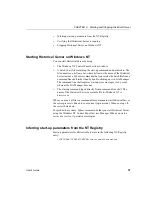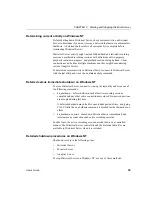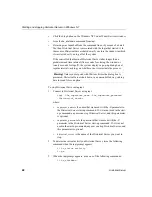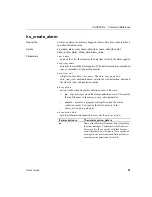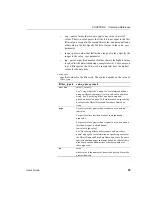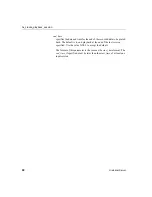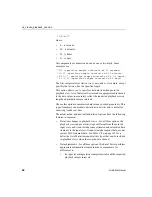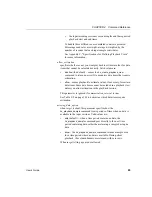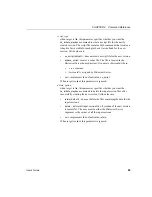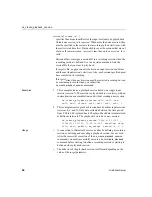
CHAPTER 4 Command Reference
User’s Guide
51
hs_create_alarm
Description
Creates an alarm. An alarm is triggered when a data item value reaches a
specified threshold value.
Syntax
hs_create_alarm view_name, data_item_name, data_item_stat,
alarm_action, alarm_action_data, alarm_value
Parameters
view_name
name of the view that contains the data item to which the alarm applies.
data_item_name
data item to which the alarm applies. If the data item contains embedded
spaces, surround it with quotation marks.
data_item_stat
statistic type for data_item_name. The data_item_name and
data_item_stat combination must exist in the view definition. Surround
the statistic type with quotation marks.
alarm_action
action to take when an alarm condition occurs. Values are:
•
log
– logs messages when the alarm condition occurs. You specify
the log file name in the alarm_action_data parameter.
•
execute
– executes a program or script file when the alarm
condition occurs. You specify the file to execute in the
alarm_action_data parameter.
alarm_action_data
specifies information required to carry out the alarm_action:
If alarm_action is
Then alarm_action_data is
log
Name of the file where Historical Server should log
the alarm messages. The default is the Historical
Server log file. If you specify a file that does not
exist, Historical Server creates it. If you specify an
existing file, the user who started Historical Server
must have write permission for the file.
Summary of Contents for 12.5.1
Page 1: ...User s Guide Historical Server 12 5 1...
Page 14: ...xiv Historical Server...
Page 46: ...Configuring multiple instances of Historical Server 32 Historical Server...
Page 56: ...Starting and stopping Historical Server on Windows NT 42 Historical Server...
Page 102: ...hs_terminate_recording 88 Historical Server...

